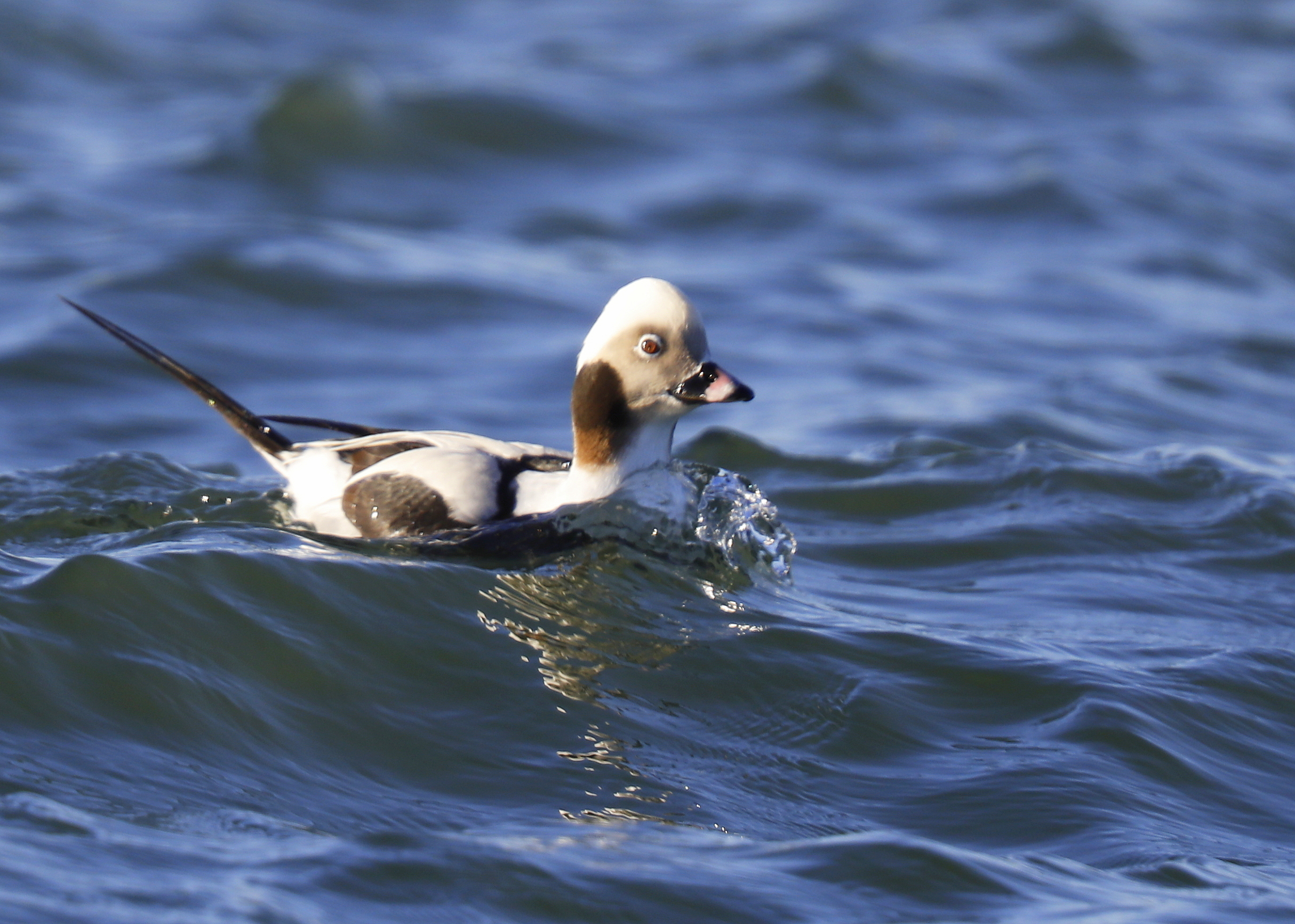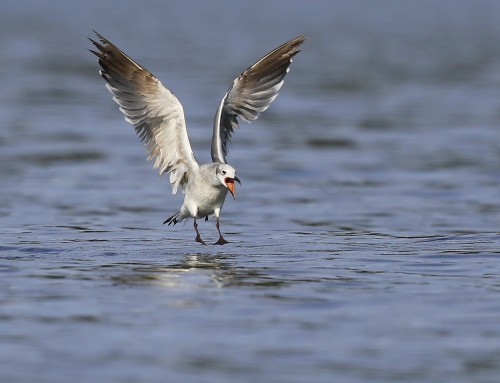The Long-tailed Duck showcases vibrant plumage during breeding season, but its winter appearance is more subdued, featuring muted tones of dark brown, black, and white for camouflage. Distinctive facial markings and the slender, dark tail continue in the winter months. These diving ducks are often seen in colder months by the bridge on Menauhant Road by Great Pond.
The long-tailed duck (Clangula hyemalis) is known for its distinctive and striking plumage, especially during the breeding season. However, it’s important to note that the appearance of a bird’s plumage can vary based on factors such as age, location, and individual variations. In winter, the male long-tailed duck undergoes a more subdued and cryptic transformation compared to its breeding plumage.
During the winter months, the male long-tailed duck typically exhibits a more subdued and mottled appearance, which serves as camouflage in their colder, more barren wintering habitats. Here are some key characteristics of the winter plumage of a male long-tailed duck:
1. Coloration: The overall coloration is more muted and cryptic, with a combination of dark brown, black, and white feathers. This helps the duck blend in with the surrounding environment, such as rocky coastlines or icy waters.
2. Head: The head is often dark, with a distinctive white patch extending from the eye to the back of the head. This feature can help in identification.
3. Body: The body feathers are generally darker and have a scalloped or mottled appearance, providing effective camouflage against the winter background.
4. Long Tail: The long, slender tail for which the species is named remains a prominent feature, even in winter. The tail is often dark and may have some subtle striping.
5. Facial Features: The male long-tailed duck retains its distinctive facial markings, including a dark eye stripe and a pale cheek patch.
It’s important to keep in mind that plumage variations can occur, and individual birds may show some differences. Additionally, long-tailed ducks can be found in various wintering locations, so the specific characteristics of their winter plumage may vary depending on the region. If you’re a birdwatcher or enthusiast, using a field guide specific to your location can be a helpful resource for detailed and accurate information.







Leave A Comment
You must be logged in to post a comment.